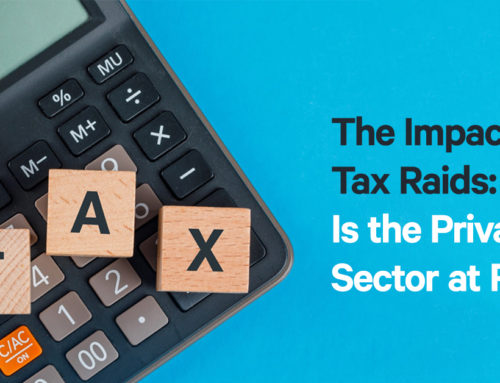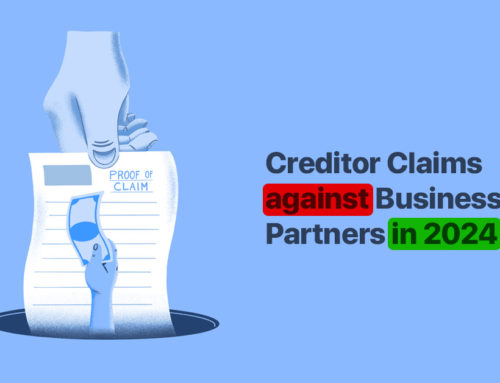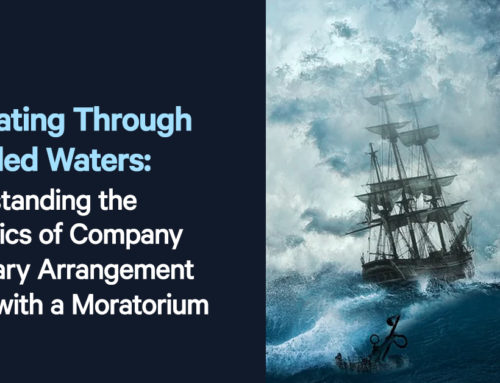There are a number of situations whereby a company can be liquidated. The majority of company liquidations are either voluntary or compulsory. However, the circumstances for entering a company liquidation process are different for each company.
When to enter company liquidation?
There are three types of company liquidation:
- Compulsory liquidation – the company is unable to pay their debts and its creditors apply to the courts to liquidate the company.
- Creditors’ voluntary liquidation – the company is unable to pay its debts but the directors decide to liquidate before being forced to by its creditors.
- Members’ voluntary liquidation – the company is able to pay its debts but wants to close for business.
In every liquidation process, the company ceases trading and a licensed Insolvency Practitioner (IP) is appointed to handle the liquidation process. Once that is completed, it is removed, or ‘struck off’, the Companies House register and no longer exists.
Whilst the directors of the company have a legal duty to cooperate with the IP during liquidation, their powers as directors stop.
Compulsory company liquidation
This type of liquidation happens when a company that can’t pay its debts is forced into liquidation by its creditors. It is usually a last resort action by creditors when all other efforts to recover debts from the company have failed.
If the debts are in excess of £5,000, a creditor is able to issue a winding up petition to the court. The court, if in agreement, will appoint an official receiver, also known as an IP, to liquidate the company and its assets in order to recover the creditors’ debts.
At this point, the company is given 21 days to pay the debt but if that doesn’t happen, it ceases trading and the IP takes over the company and ‘liquidates’ its assets, i.e. sells off any company assets, to raise the funds to pay back creditors. The directors are legally required to work with the IP throughout the liquidation process. If they don’t, they are liable to prosecution by the Insolvency Service.
Occasionally, a company is forced into compulsory liquidation in the public interest. In this situation, a government agency or the Crown will issue a winding up petition if they believe the company is contravening legislation or acting against the public’s interest. In this circumstance, disqualification and/or criminal proceedings are likely to occur, usually at the request of the liquidator.
Creditors’ voluntary company liquidation
When a company is unable to pay its debts to creditors, and the situation is unlikely to change, the directors of the company are able to make the decision to enter into company liquidation voluntarily. There are different situations that warrant a creditors’ voluntary liquidation:
- There are no immediate funds available and the company is no longer viable
- Creditors are threatening to issue a winding up petition or other legal action
- The company is not able to pay its debts, on time or otherwise
- The directors believe further debts are likely to be incurred
- There is an issue of potential or actual wrongful trading
The directors must inform shareholders that the company is insolvent and it must cease trading. At the following creditors meeting, a liquidator is appointed who proceeds to take over control of the company and the liquidation process. The IP sells the company’s assets to pay back creditors. However, if there are no assets to be sold in order to raise the necessary funds, whilst the creditors lose out, the former directors are liable to pay for the IP and liquidation process.
Once the liquidation process has been completed, the company is removed from the Companies House register and no longer exists.
Members’ voluntary company liquidation
A company may only enter a members’ voluntary liquidation if they are solvent, i.e. they have sufficient funds to pay their debts including tax liabilities and any contractual obligations. So, why close the company? There are a number of reasons why the directors of a solvent company may decide to close the company:
- The owner/directors of the company want to retire
- There is no-one to take over the company should the owners/directors wish to retire
- The purpose of the company no longer exists
- A contractor wishes to wind up the company to take on a full-time role elsewhere
- The company is being restructured or the structure is being simplified under Section 110 of the Insolvency Act 1986
- The company is being divided or it’s a demerger and assets need to be transferred. This is known as a ‘restructuring members’ voluntary liquidation’.
With this type of company liquidation, the company must not only be able to pay all their creditors in full within 12 months of the process being completed, they must also be able to pay all future liabilities, such as HMRC in terms of corporate tax and VAT, the closing of company accounts, any lease and finance arrangements, and any PAYE/NIC obligations.
As with a creditors’ voluntary liquidation, the directors must get the agreement of the shareholders to be able to go ahead and appoint an IP to handle the liquidation process. As in all company liquidations, the directors are legally required to work with the appointed IP throughout the liquidation process. Once the directors have prepared the statutory declaration that the company is solvent, both this document and the closing financial statement must be sworn in front of a notary or solicitor before the liquidation process can continue.
Whilst there are tax benefits to a members’ voluntary liquidation, such as the Business Asset Disposal Relief (formerly Entrepreneurs Relief), it should not be the principal reason. HMRC’s Targeted Anti Avoidance Rules (TAAR) allows them to challenge any liquidation shareholder distributions if they believe avoiding tax was the main reason why the solvent company was liquidated.
If your business is struggling with debts and you’re not sure what your next step should be, or you are facing a compulsory liquidation or have to consider winding up an insolvent company voluntarily, or you have a solvent company that you would like to close, the first step is to seek professional advice. Our highly experienced professionals at Leading UK are on hand to help and advise on the process.






